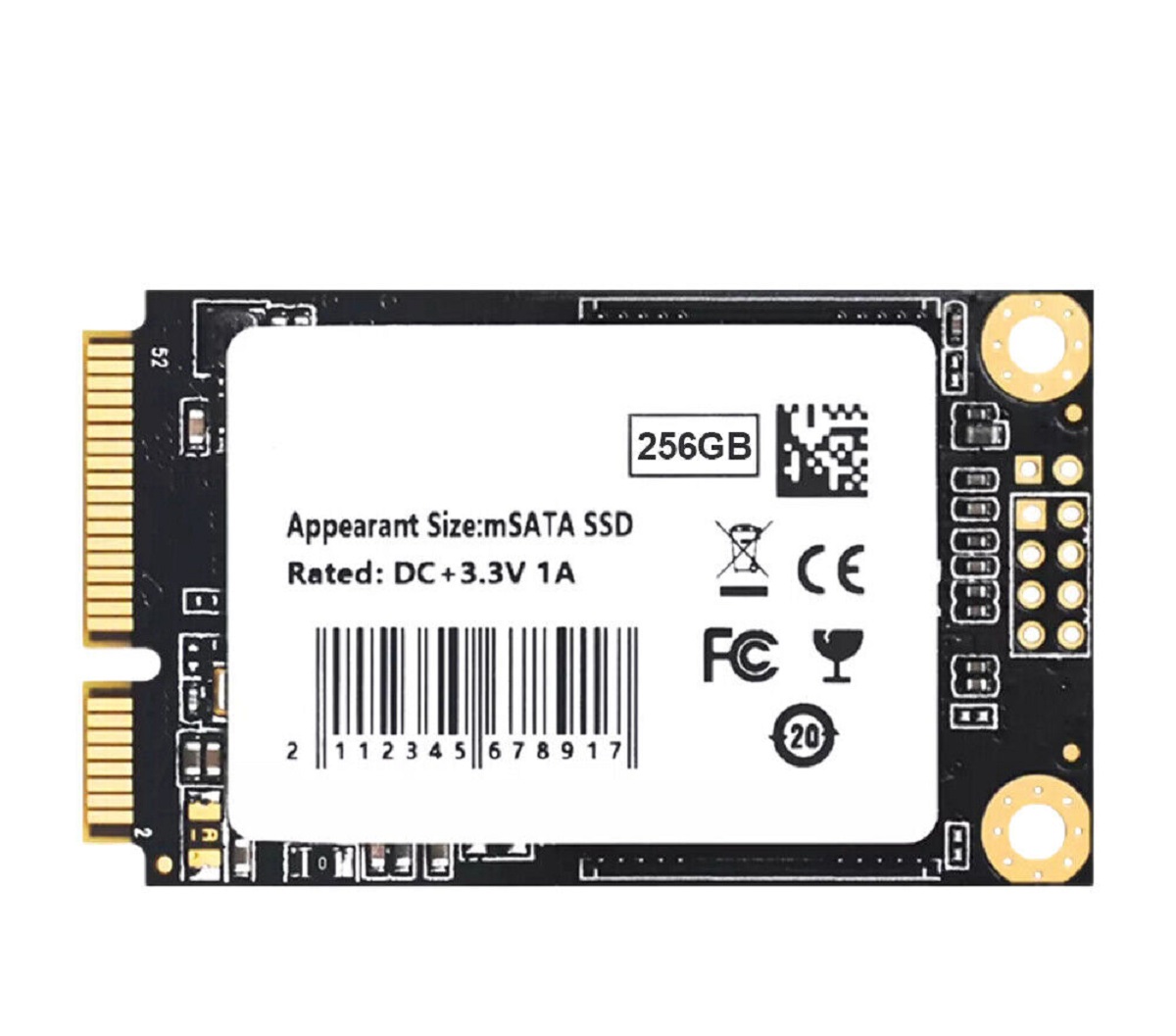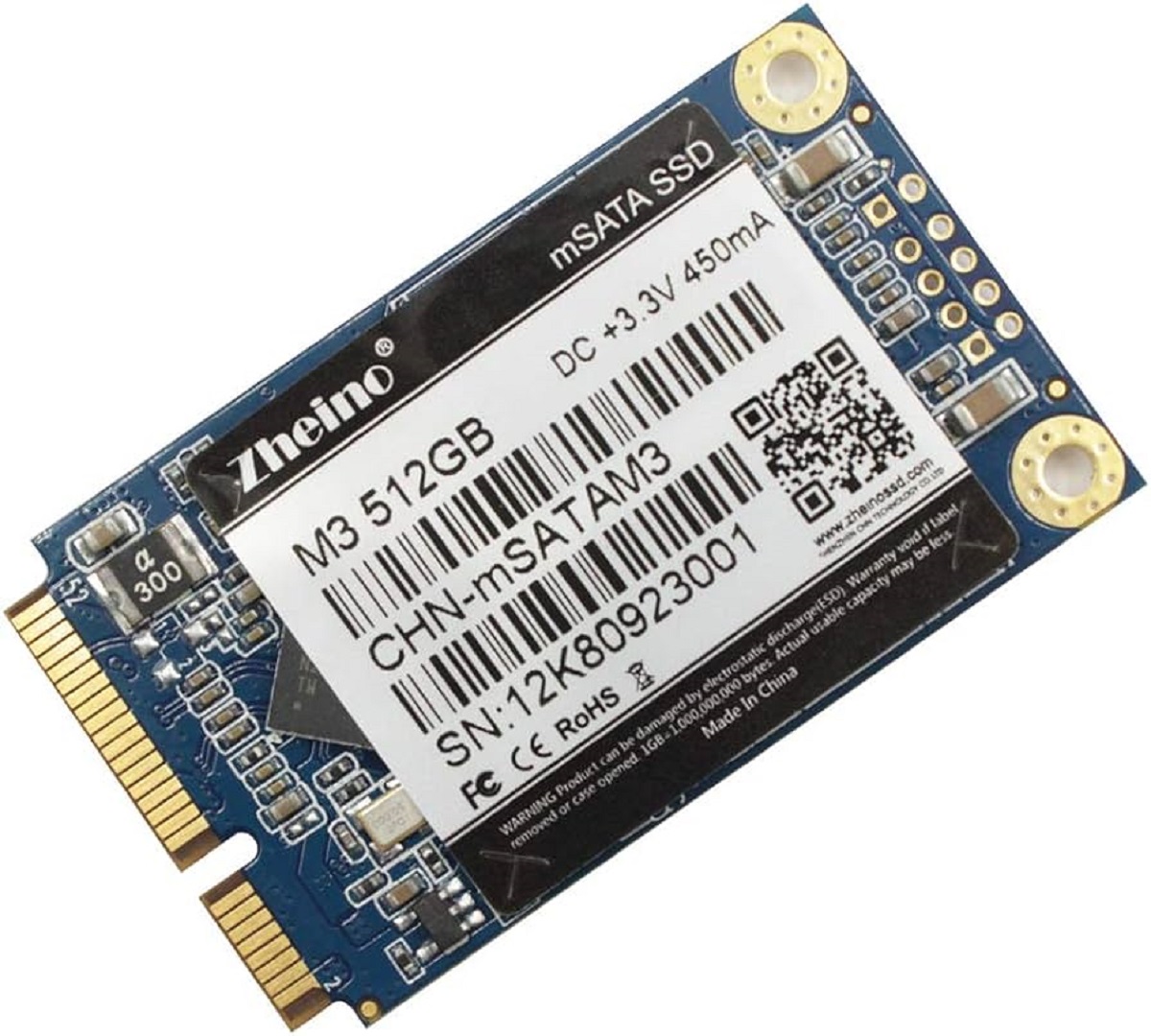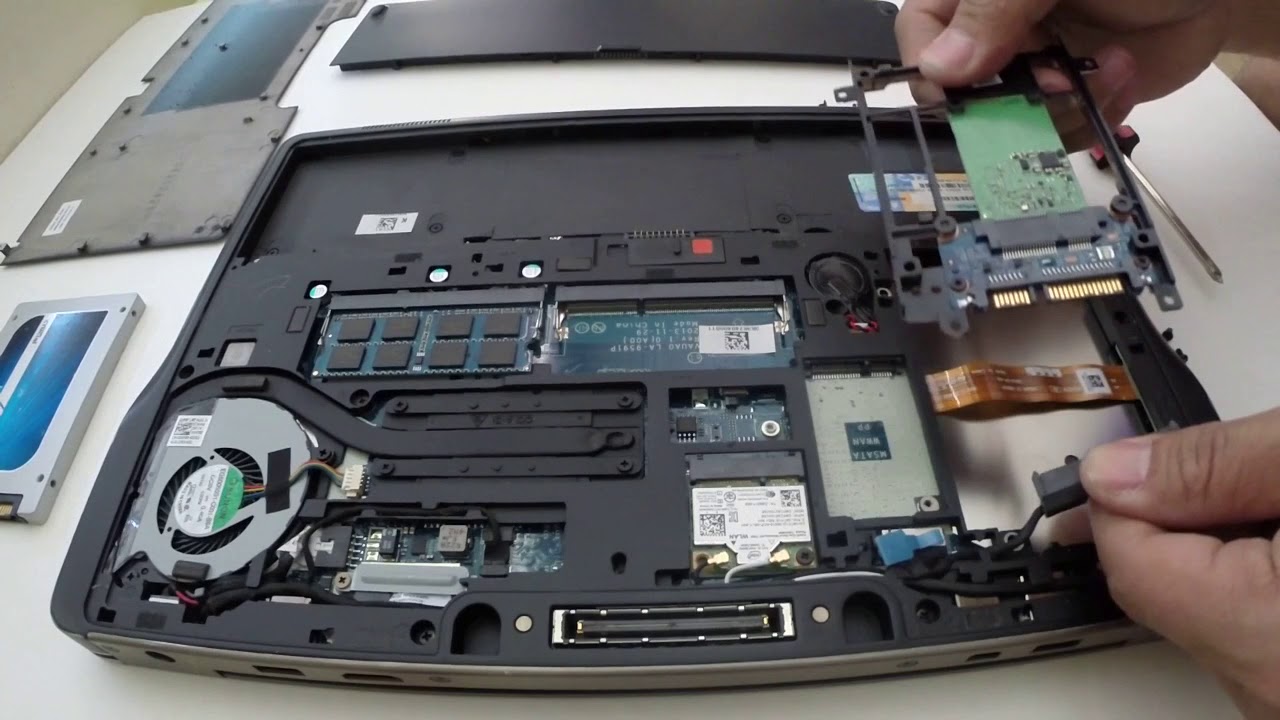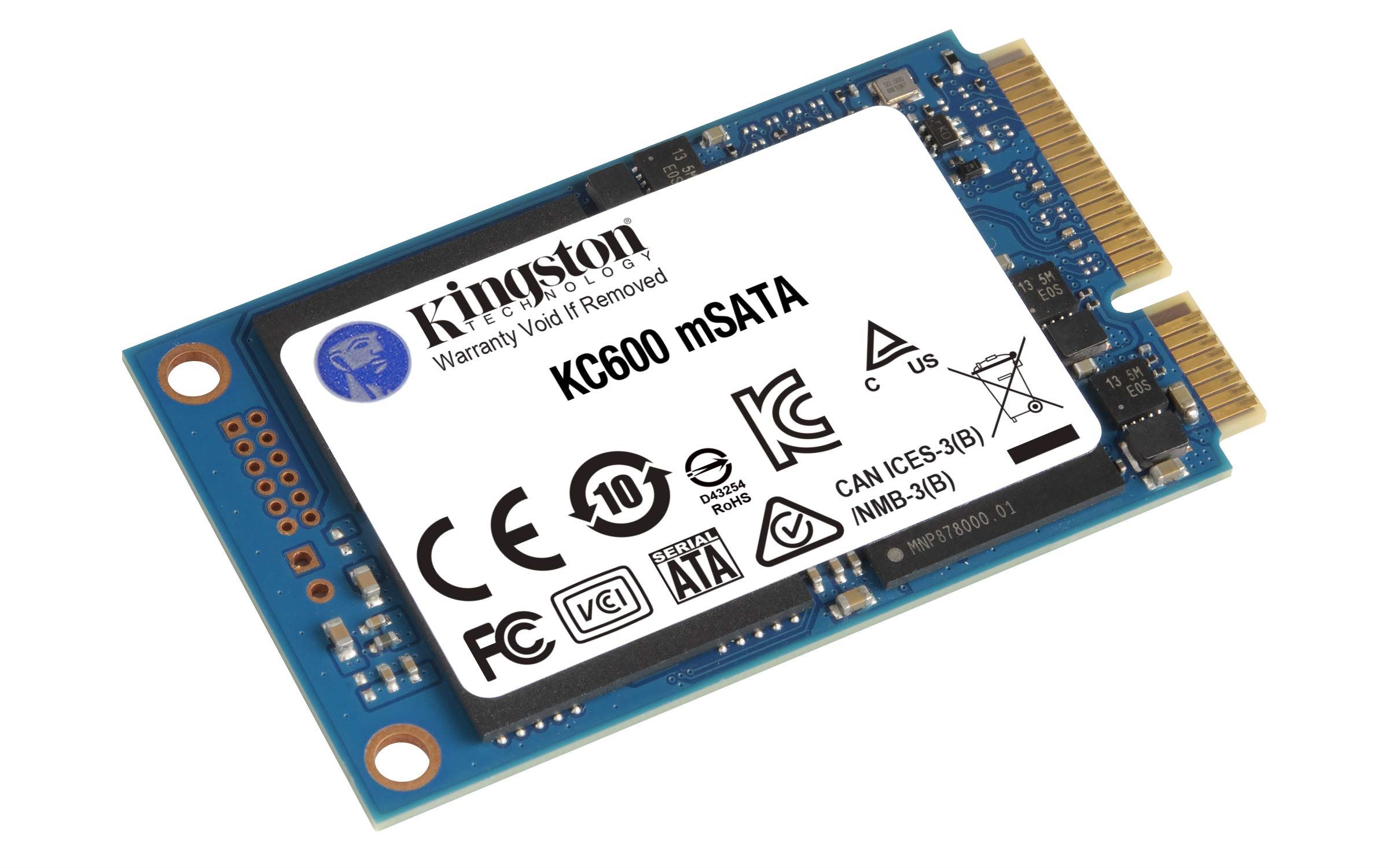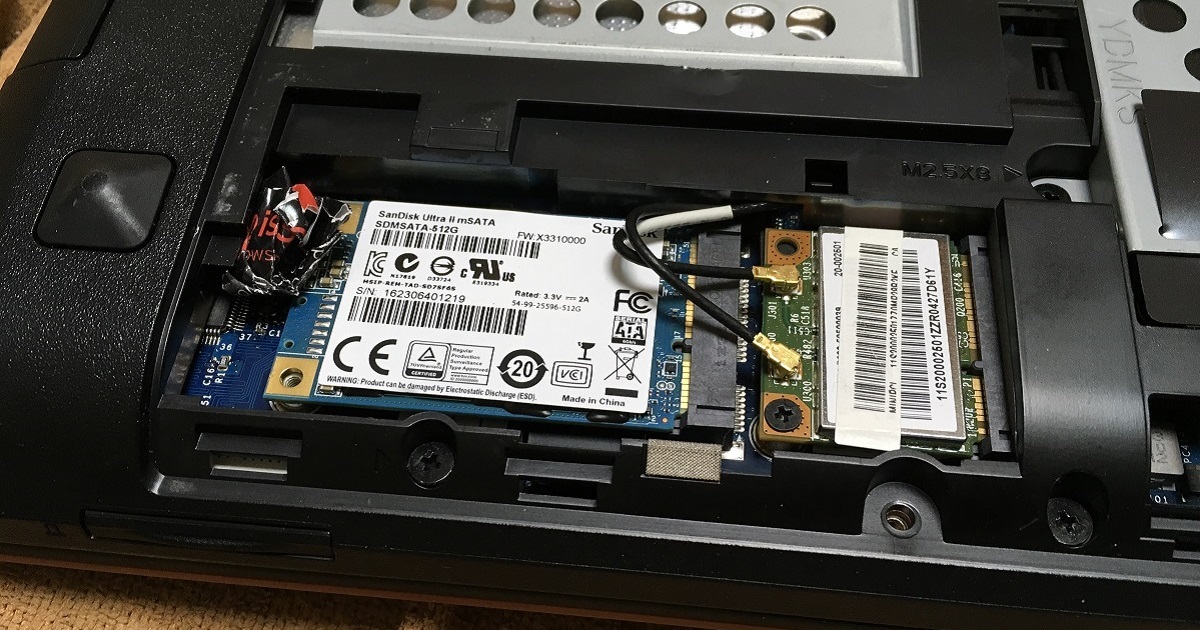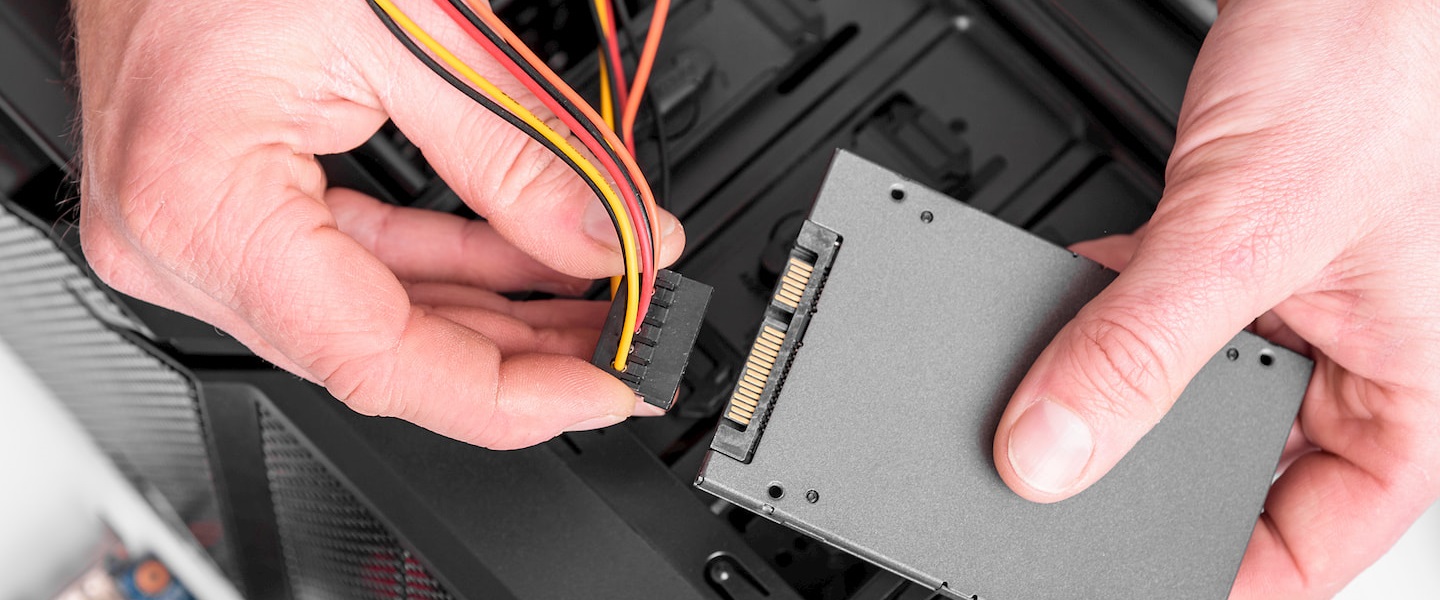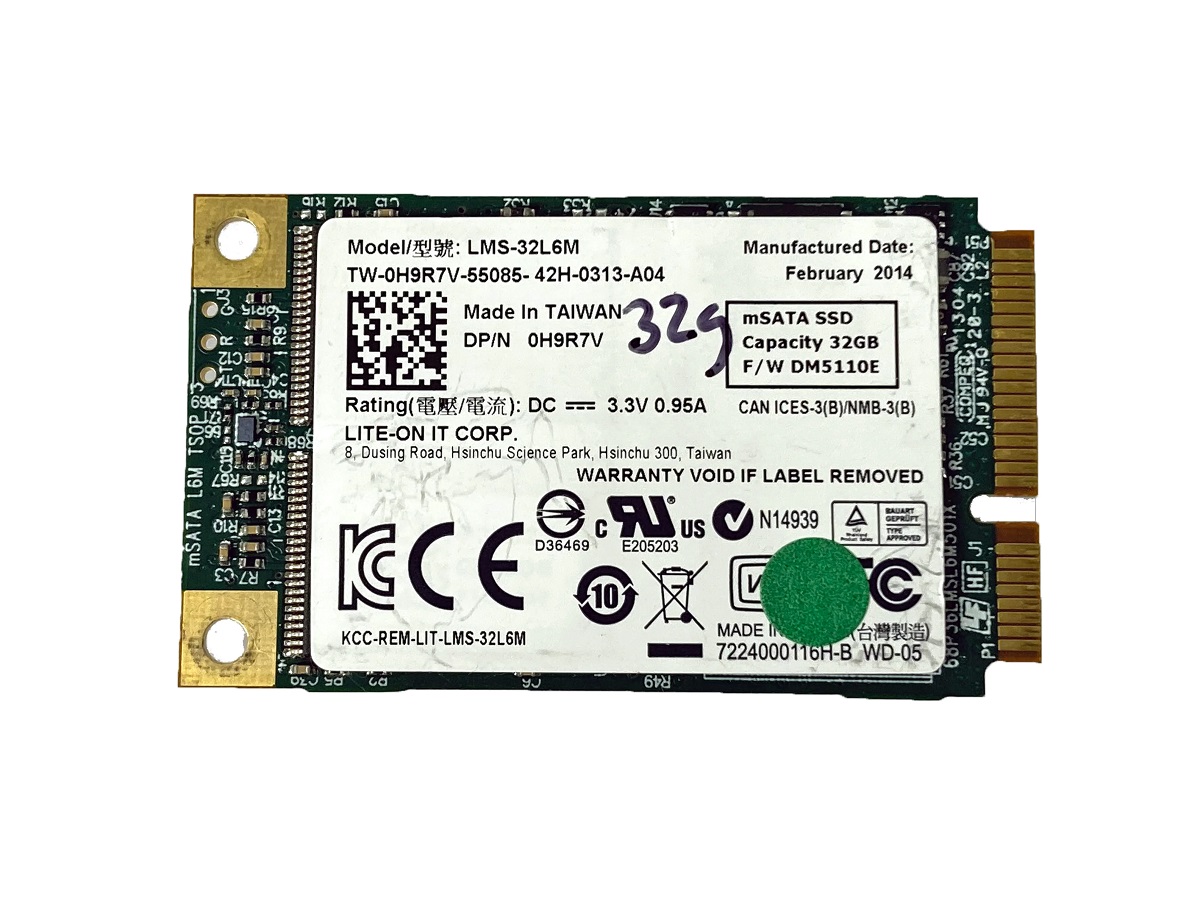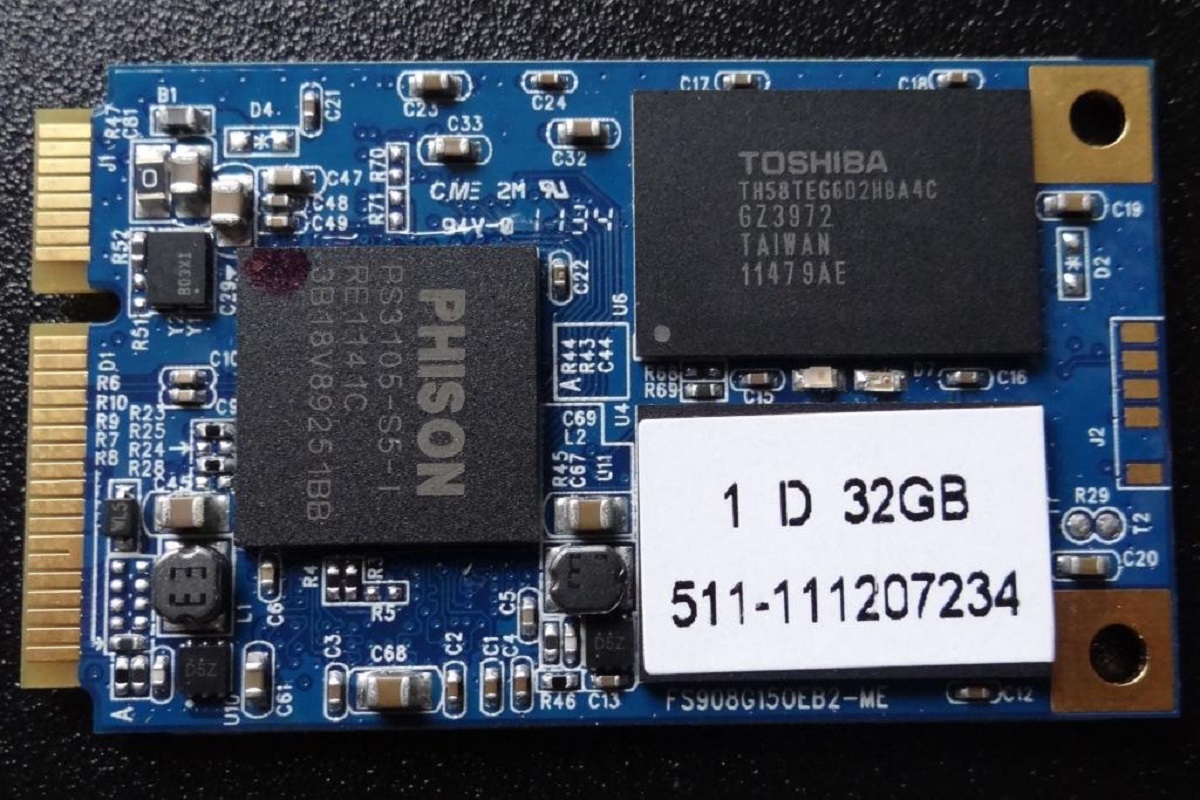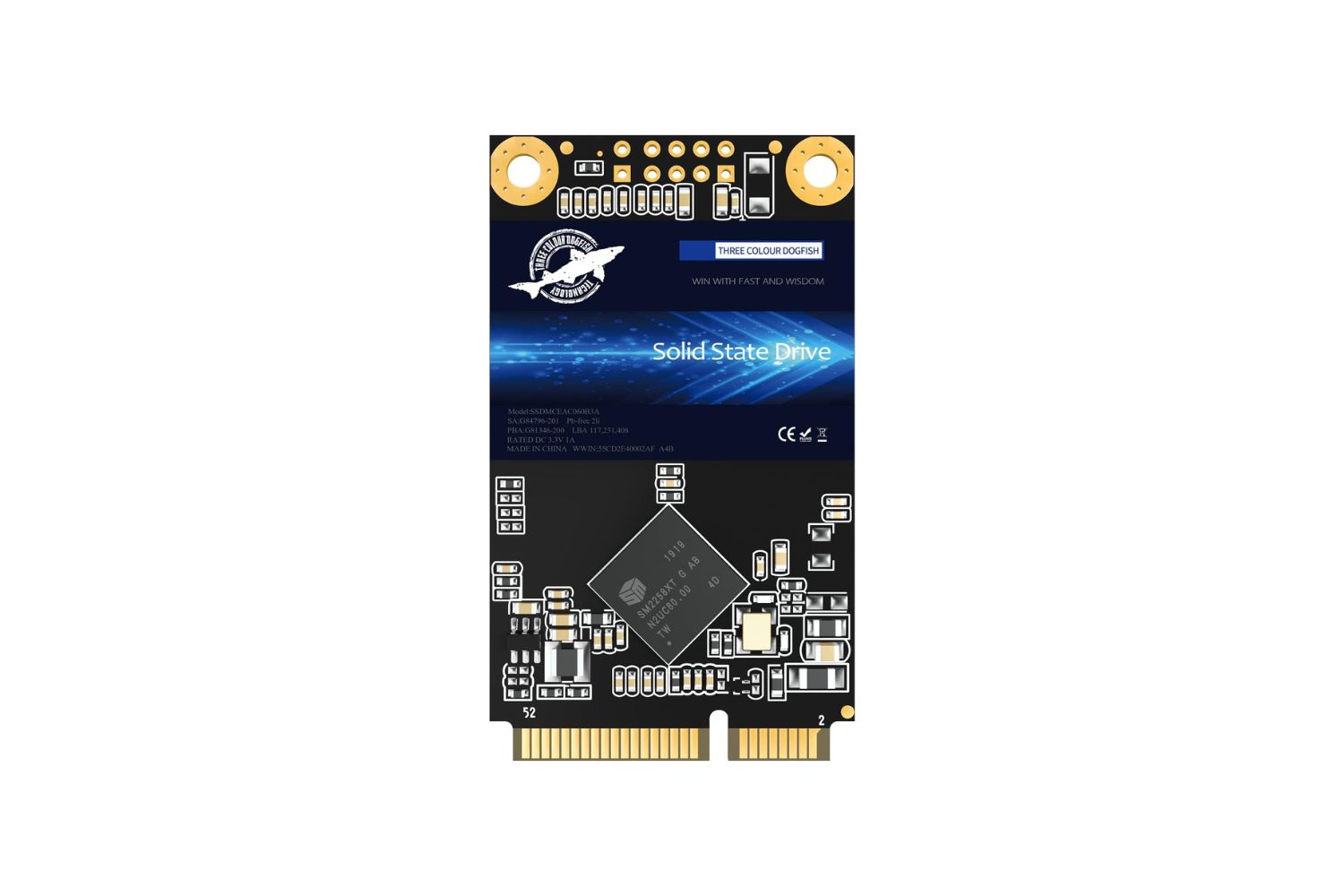Introduction
Welcome to the world of modern storage solutions! In this digital age, where data is gaining more value than ever before, it becomes crucial to have reliable and efficient storage options. This is where mSATA SSD comes into the picture. mSATA stands for Mini-SATA, and it is a compact form factor of solid-state drives (SSD) that offer numerous benefits over traditional hard drives (HDD).
Whether you are a technology enthusiast, a professional working with large files, or someone who just wants to enhance their computer’s performance, understanding what mSATA SSDs are and how they can benefit you is essential.
In this article, we will dive into the world of mSATA SSD, exploring its definition, benefits, differences from traditional hard drives, installation process, common uses and applications, as well as factors to consider when purchasing one.
By the end of this article, you will have a comprehensive understanding of mSATA SSDs and how they can revolutionize your storage experience. So, without further ado, let’s jump right in!
What is mSATA SSD?
mSATA SSD, short for Mini-SATA solid-state drive, is a small yet powerful storage device that provides high-speed data transfer and reliable performance. It is a compact form factor SSD that utilizes the Mini-SATA interface, making it an ideal choice for devices with limited space, such as ultrabooks, tablets, and small form factor PCs.
Measuring just 30mm x 50.95mm, mSATA SSDs are significantly smaller than the standard 2.5-inch SATA drives commonly found in laptops and desktops. Despite their small size, they boast impressive storage capacities ranging from 16GB to 1TB, allowing users to store large amounts of data, including documents, multimedia files, and even operating systems.
One of the key advantages of mSATA SSDs is their lightning-fast read and write speeds. With no moving parts, mSATA SSDs provide near-instantaneous access to data, resulting in improved system responsiveness and faster file transfers. This makes them an excellent choice for tasks that require quick data retrieval, such as video editing, gaming, and running resource-intensive applications.
Furthermore, mSATA SSDs utilize NAND flash memory technology, which offers significant benefits over traditional hard drives in terms of durability and energy efficiency. Unlike mechanical hard drives that rely on spinning disks and fragile moving parts, mSATA SSDs are more resistant to physical impact and can withstand higher levels of shock and vibration.
Additionally, mSATA SSDs consume less power, extending the battery life of laptops and mobile devices. This not only provides a longer usage time but also contributes to a greener computing environment by reducing energy consumption.
Overall, mSATA SSDs are the perfect solution for those seeking high-performance storage in a small form factor. Their compact size, impressive data transfer speeds, and reliable performance make them an ideal choice for various applications, ranging from personal computing to enterprise-level storage needs.
Benefits of mSATA SSD
mSATA SSDs offer a range of benefits that make them a superior choice for storage solutions compared to traditional hard drives. Let’s take a closer look at some of the key advantages:
1. Compact Form Factor:
The small size of mSATA SSDs allows for easy integration into devices with limited space, such as ultrabooks, tablets, and mini PCs. This makes them an excellent choice for portable devices or applications where size is a critical factor.
2. High-Speed Performance:
mSATA SSDs deliver lightning-fast read and write speeds, significantly improving system responsiveness. Whether you are booting up your computer, launching applications, or transferring large files, mSATA SSDs ensure swift and seamless performance.
3. Reduced Power Consumption:
mSATA SSDs consume less power compared to traditional hard drives, resulting in longer battery life for laptops and mobile devices. This energy efficiency not only enhances the portability of devices but also contributes to a more sustainable and eco-friendly computing experience.
4. Enhanced Reliability:
Unlike traditional hard drives, mSATA SSDs have no moving parts, which makes them less susceptible to damage from accidental drops, shocks, or vibrations. This improved durability translates to greater peace of mind when it comes to data integrity and longevity.
5. Silent Operation:
Since mSATA SSDs do not have any mechanical components, they operate silently, eliminating the distracting noise caused by spinning disks. This makes them an ideal choice for environments where noise reduction is a priority, such as recording studios or quiet workspaces.
6. Improved Boot and Load Times:
By installing the operating system and frequently used applications on an mSATA SSD, users can experience drastically reduced boot times and faster application load times. This results in a more efficient and productive computing experience, allowing you to get things done quickly.
7. Scalable Storage:
mSATA SSDs offer a range of storage capacities, allowing users to select the ideal size based on their needs. Whether you require a small capacity for basic tasks or a larger capacity for storing extensive multimedia libraries or running resource-intensive applications, mSATA SSDs provide flexible storage options.
With these numerous advantages, mSATA SSDs have become a popular choice for both personal and professional use. Whether you are a casual user seeking improved performance or a power user requiring high-capacity and high-speed storage, mSATA SSDs deliver the reliability and efficiency you need.
Differences between mSATA SSD and Traditional Hard Drives
While both mSATA SSDs and traditional hard drives serve the purpose of storing data, they differ in several key aspects. Understanding these differences can help you make an informed decision when choosing the right storage solution for your needs. Let’s explore the disparities between mSATA SSDs and traditional hard drives:
1. Form Factor:
The most apparent difference is in their physical size. mSATA SSDs are much smaller and compact compared to traditional hard drives, making them suitable for devices with limited space, such as ultrabooks and tablets. On the other hand, traditional hard drives are larger and available in various form factors, including 2.5-inch and 3.5-inch sizes, commonly used in laptops and desktop computers.
2. Data Transfer Speed:
mSATA SSDs offer faster data transfer speeds compared to traditional hard drives. By utilizing NAND flash memory technology, mSATA SSDs provide near-instantaneous access to data. In contrast, traditional hard drives rely on spinning disks and mechanical read/write heads, resulting in slower read and write speeds.
3. Power Consumption:
mSATA SSDs consume significantly less power than traditional hard drives. This not only extends the battery life of laptops and mobile devices but also reduces overall power consumption. Traditional hard drives, with their rotating disks and moving parts, require more power to operate.
4. Durability:
mSATA SSDs have no moving parts, making them more resistant to shocks, vibrations, and accidental drops. Traditional hard drives, on the other hand, are prone to damage when subjected to physical stress due to their mechanical components. This makes mSATA SSDs a more reliable and durable storage option.
5. Noise Level:
mSATA SSDs operate silently since they lack the spinning disks found in traditional hard drives. In contrast, traditional hard drives produce noise due to the rotational movement of their disks and the mechanical read/write heads. This noise can be noticeable, especially in quiet environments.
6. Capacity and Cost:
Traditional hard drives generally offer larger storage capacities compared to mSATA SSDs. This is because traditional hard drives are available in higher terabyte (TB) capacities, while mSATA SSDs typically range from 16GB to 1TB. However, mSATA SSDs are more expensive per gigabyte (GB) compared to traditional hard drives.
Considering these differences, the choice between mSATA SSDs and traditional hard drives depends on your specific requirements. If you prioritize speed, durability, and portability, mSATA SSDs are an excellent choice. Alternatively, if you need higher storage capacities at a lower cost, traditional hard drives may be the better option. Ultimately, it’s essential to evaluate your needs and use cases to determine which storage solution best fits your requirements.
How to Install and Use mSATA SSD
Installing and using an mSATA SSD is a relatively straightforward process, whether you are upgrading an existing system or building a new one. Here’s a step-by-step guide to help you get started:
1. Check Compatibility:
Before purchasing an mSATA SSD, ensure that your device supports the mSATA interface. Most modern ultrabooks, laptops, and small form factor PCs are equipped with an mSATA slot. However, it’s always a good idea to consult the device’s specifications or check with the manufacturer to confirm compatibility.
2. Gather Required Tools:
You will need a small screwdriver, typically a Phillips head or Torx driver, to open the device and secure the mSATA SSD in place. Ensure you have the appropriate tools on hand before beginning the installation process.
3. Open the Device:
If you are adding an mSATA SSD to an existing device, turn off the device and remove the battery (if possible). Then, locate the access panel for the storage drive and open it using the screwdriver. If you are building a new system, consult your device’s manual for instructions on opening the case.
4. Locate the mSATA Slot:
Identify the mSATA slot on your device’s motherboard. It is a small slot usually labeled “mSATA” and may be located near the existing hard drive or in a separate compartment. If you are unsure, consult your device’s manual or manufacturer’s website for guidance.
5. Insert the mSATA SSD:
Align the mSATA SSD with the slot and gently slide it in at a slight angle. Apply light pressure until the SSD is fully seated in the slot. Take care not to force it or damage the connectors.
6. Secure the mSATA SSD:
Using the provided screws or the ones removed previously, carefully secure the mSATA SSD in place. Tighten the screws but ensure they are not overtightened. This will help prevent any potential damage to the SSD or motherboard.
7. Close the Device:
If you opened an existing device, reattach the access panel and secure it with the screws. If you built a new system, follow the manufacturer’s instructions for closing the case and securing all components properly.
8. Initialize and Format the mSATA SSD:
Once the mSATA SSD is installed, power on the device and enter the BIOS/UEFI settings. Ensure that the system recognizes the new storage device. From there, you can proceed to initialize and format the drive using your device’s operating system. Follow the instructions specific to your OS for formatting the mSATA SSD.
With the mSATA SSD successfully installed and formatted, you can now start using it as your primary storage device. You can install the operating system, applications, and store your files on the mSATA SSD, enjoying improved speed and performance compared to traditional hard drives.
Common Uses and Applications of mSATA SSD
mSATA SSDs have found a wide range of uses and applications, thanks to their compact form factor and high-speed performance. Let’s explore some of the common use cases where mSATA SSDs excel:
1. Ultrabooks and Thin Laptops:
mSATA SSDs are a popular choice for ultrabooks and thin laptops due to their small size and lightweight design. These devices prioritize portability, and mSATA SSDs provide the necessary storage solution without compromising on performance.
2. Tablet Computers:
Tablet computers, such as high-end Android tablets or Windows-based tablets, benefit from the speed and durability of mSATA SSDs. With their low power consumption and fast data access, mSATA SSDs enhance the overall performance and user experience of these portable devices.
3. Small Form Factor PCs:
mSATA SSDs are ideal for small form factor PCs, including mini PCs, HTPCs (Home Theater PCs), and compact gaming rigs. The small size of mSATA SSDs allows for more efficient use of space, enabling these systems to maintain a small footprint without compromising on storage capacity or performance.
4. Industrial PCs and Embedded Systems:
In industrial applications and embedded systems, reliability is crucial. mSATA SSDs, with their shock and vibration resistance, are commonly used for data logging, system storage, and operating system deployment in environments with harsh conditions.
5. Digital Signage:
mSATA SSDs are widely used for digital signage applications, where reliable and high-performance storage is essential. These SSDs can reliably handle continuous data streaming and provide fast access to multimedia content, ensuring smooth playback and a seamless viewing experience.
6. Gaming Consoles:
Modern gaming consoles, such as the PlayStation and Xbox, often offer storage expansion options. mSATA SSDs are a popular choice to enhance the storage capacity and performance of these consoles, allowing gamers to install more games and experience faster load times.
7. Media and Content Creation:
For professionals in the creative industry, such as video editors, photographers, and graphic designers, mSATA SSDs offer fast and reliable storage solutions. These SSDs enable quick access to large media files, enhancing productivity and workflow efficiency.
These examples represent just a fraction of the numerous applications of mSATA SSDs. Given their small footprint, high-speed performance, and durability, mSATA SSDs continue to find new uses and contribute to the evolution of storage technology in various industries and everyday computing experiences.
Factors to Consider When Purchasing mSATA SSD
When looking to purchase an mSATA SSD, several factors should be taken into consideration to ensure that you choose the right SSD for your specific needs. Here are some key factors to consider:
1. Storage Capacity:
Determine the amount of storage capacity you require. Consider the types of files you will be storing and the applications you will be using. mSATA SSDs are available in various capacities, ranging from 16GB to 1TB or more, so choose an SSD that provides enough space for your present and future needs.
2. Data Transfer Speed:
The data transfer speed is a critical factor to consider, especially if you require fast read and write speeds for specific tasks. Look for mSATA SSDs that offer high-speed performance, typically measured in terms of read and write speeds (e.g., 500MB/s read, 400MB/s write).
3. Reliability and Endurance:
Consider the reliability and endurance of the mSATA SSD. Look for SSDs that offer features such as error correction technologies, wear leveling, and power-loss protection to ensure data integrity and durability over time. Additionally, check for the endurance rating (typically measured in Terabytes Written, or TBW) to assess the SSD’s lifespan.
4. Compatibility:
Ensure that the mSATA SSD you choose is compatible with your device. Confirm that your device supports the mSATA interface and check for any specific compatibility requirements. Consult your device’s manual or the manufacturer’s website for compatibility information and recommendations.
5. Price and Value:
Consider the price point of the mSATA SSD and evaluate its value in terms of the features and performance it offers. Compare prices from different manufacturers and consider any additional benefits or warranty coverage that may add value to your purchase decision.
6. Brand and Reputation:
Choose a reputable brand when purchasing an mSATA SSD. Established brands often provide better product quality, reliability, and customer support. Reading customer reviews and checking for warranties can help gauge the reputation and trustworthiness of the brand.
7. Power Efficiency:
If you prioritize power efficiency, consider mSATA SSDs that have low power consumption. Lower power usage not only increases battery life for portable devices but also reduces overall energy consumption, contributing to a more eco-friendly computing experience.
By considering these factors, you can make an informed decision when purchasing an mSATA SSD that best fits your storage requirements and ensures optimal performance and reliability.
Conclusion
mSATA SSDs have revolutionized the storage landscape with their compact form factor, high-speed performance, and reliability. Whether you are a tech enthusiast, a professional in need of fast and reliable storage, or a casual user looking to enhance your computing experience, mSATA SSDs offer a range of benefits that make them a superior choice over traditional hard drives.
In this article, we explored the definition of mSATA SSDs and their key advantages. We discussed the differences between mSATA SSDs and traditional hard drives, highlighting the factors that set them apart. We also delved into the installation process of mSATA SSDs and provided guidance on how to use them effectively.
Additionally, we explored common uses and applications of mSATA SSDs, showcasing their versatility in various industries and everyday computing scenarios. Whether it’s ultrabooks, tablets, small form factor PCs, or professional applications like media editing and content creation, mSATA SSDs have proven their worth and provided tangible benefits.
Moreover, we examined crucial factors to consider when purchasing an mSATA SSD, such as storage capacity, data transfer speed, reliability, compatibility, price, and brand reputation. By taking these factors into account, you can make an informed decision and choose the right mSATA SSD that meets your specific needs and budget.
In conclusion, mSATA SSDs offer a powerful storage solution in a small package. With their high-speed performance, durability, and compact form factor, mSATA SSDs continue to push the boundaries of storage technology and enhance the computing experience for a wide range of users. So, whether you are upgrading your existing system or building a new one, consider the benefits of mSATA SSDs and enjoy the speed, reliability, and efficiency they bring to your digital life.







